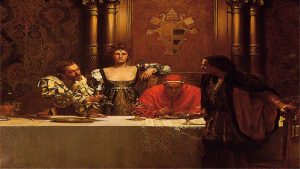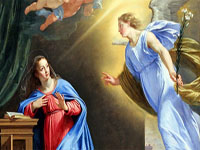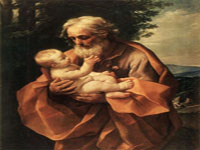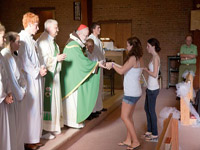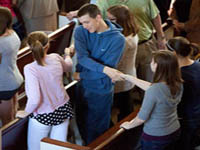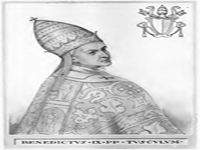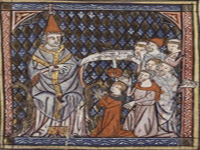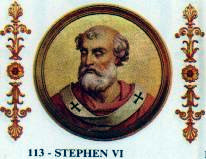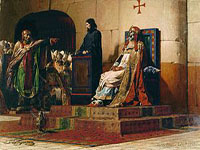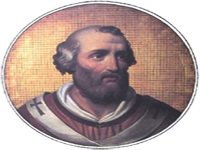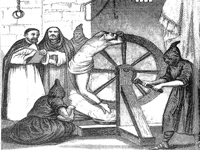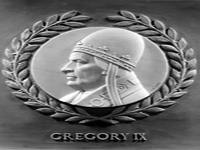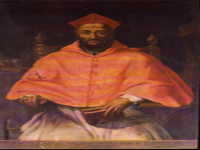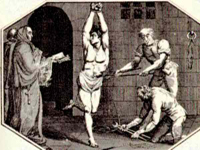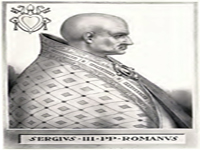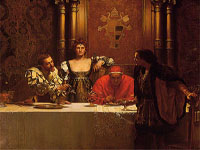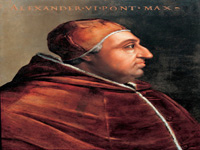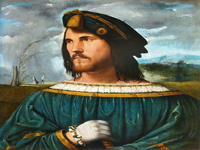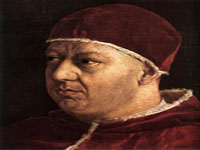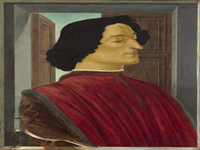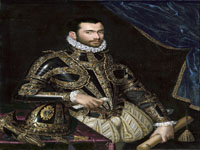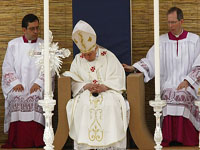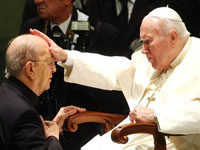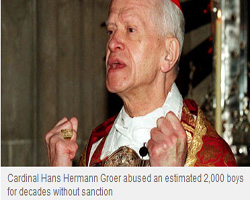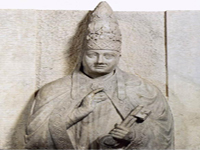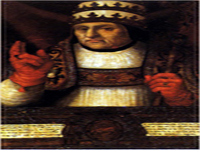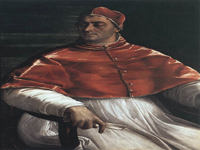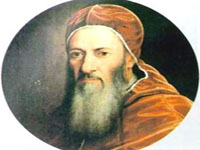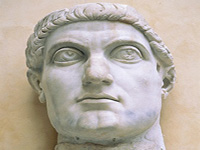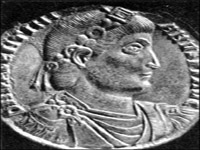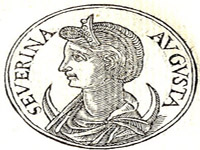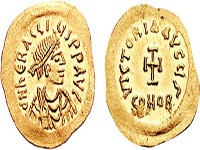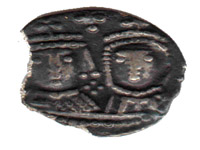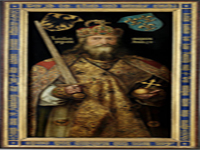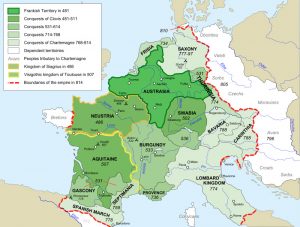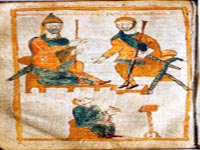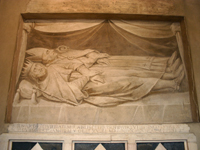Undoubtedly, the true religion of God every time and everywhere from the times of Adam to Muhammad inspires deep spirituality and self-control rather than desire suppression. Man is an intermediate being that is midway between inanimate objects and angels. While a human has earthly desires, one also has celestial faculties.
Man may not, and even cannot, be purely earthly or purely celestial. Otherwise, man would have become an inanimate object or an angel. That is why one should steer a middle course between the earthly soil and the celestial light so that one can convey the message for which man was created.
Therefore, the successive heavenly messages of the true religion of God every time and everywhere took into consideration man’s physical and spiritual dimensions so that man can feel utmost spirituality while having adequate satisfaction of one’s worldly desires paving the way for spiritual development.
Man is a body and a soul. Each has its own requirements and needs. Neither of them can survive without the other. The negligence of the needs of one of them adversely affects the other and ultimately leads to man’s unhappiness.
It is safe to say that the indulgence or negligence of the needs of any of man’s two components to the detriment of the other per se serves as evidence of the falsehood of the faith, law and way of life. While God does not allow total immersion in the earthly soil through the indulgence of the bodily desire, He does not command such spiritual development which negatively affects body. In the Qur’an, we read:
Seek, through that which Allah has given you, the home of the Hereafter; and [yet], do not forget your share of the world. (Al-Qasas 28:77)
Thus, false is such a religion or faith which permits indulgence or negligence of any of man’s two components, that is body and soul, to the detriment of the other.
Unfortunately, in the contemporary Christianity, the clergymen often mouth off about pure spirituality coupled with the total suppression of man’s worldly desire or the so-called “monasticism”. About that, in the Qur’an, we read:
Then We sent following their footsteps Our messengers and followed [them] with Jesus, the son of Mary, and gave him the Gospel. And We placed in the hearts of those who followed him compassion and mercy and monasticism, which they innovated; We did not prescribe it for them except [that they did so] seeking the approval of Allah . But they did not observe it with due observance. So We gave the ones who believed among them their reward, but many of them are defiantly disobedient. (Al-Hadid 57:27)
It is worth noting, according to the above verse, that the stated monasticism goes against man’s very nature. God neither wants nor commands it. What is more, most people cannot put it into practice for it contradicts the purpose of man’s creation, that is, obedience through both earthly and spiritual proportions, as well as spiritual development coupled with reasonable gratification.
The most conclusive evidence of the falsehood of monasticism, pure spirituality and desire suppression promoted by the contemporary Christianity is its most prominent followers’ failure to adhere to the same from the dawn of Christianity and throughout history. Let’s review the history of the early Christianity to spotlight a few instances of the inapplicability of pure spirituality or even desire suppression propagated by the contemporary Christianity.
Mary’s Giving Birth to Jesus while Betrothed to Joseph
First of all, where is the pure spirituality in the contemporary Christianity though God is portrayed as begetting a son by a woman betrothed to someone else?
In the New Testament, we read: “Now the birth of Jesus Christ was as follows: when His mother Mary had been betrothed to Joseph, before they came together she was found to be with child by [the power of] the Holy Spirit.” (Matthew 1:18)
If looking at or coveting the woman of someone else is forbidden in the Bible, how come God begets a son by the woman of someone else? In the Old Testament, we read:
“Thou shalt not covet thy neighbor’s house; thou shalt not covet thy neighbor’s wife, nor his manservant, nor his maidservant, nor his ox, nor his ass, nor anything that is thy neighbor’s.” (Exodus 20:17), (Deuteronomy 5:21)
The New Testament quotes Jesus as saying: “You have heard that it was said, ‘You must not commit adultery.’ But I tell you that if a man looks at a woman and wants to sin sexually with her, he has already committed that sin with her in his mind. If your right eye makes you sin, take it out and throw it away. It is better to lose one part of your body than to have your whole body thrown into hell.” (Matthew 5:27-29)
If impregnation out of wedlock is deemed adultery and has a capital punishment, how come God commits that offence?
About the adultery punishment in the Bible, we read: “If a man has sexual relations with his neighbor’s wife, both the man and the woman are guilty of adultery and must be put to death!” (Leviticus 20:10)
Immodesty even at Churches
Where is the pure spirituality in the contemporary Christianity though immodesty is shown at churches?
For example, while immodesty in dress is prohibited both in the Bible and the early popes’ decrees, immodesty in dress is widely shown at churches. In the Bible, we read:
“Every woman who prays or prophesies with her head uncovered dishonors her head, since that is one and the same as having her head shaved. For if a woman doesn’t cover her head, she should have her hair cut off. But if it is disgraceful for a woman to have her hair cut off or her head shaved, let her head be covered.” (1 Corinthians 11:5-6)
We also read: “Judge for yourselves: Is it proper for a woman to pray to God with her head uncovered?” (1 Corinthians 11:13)
We further read: “Also, the women are to dress themselves in modest clothing, with decency and good sense, not with elaborate hairstyles, gold, pearls, or expensive apparel” (1 Timothy 2:9)
According to Liber Pontificalis, Pope Linus, the second pope of the Catholic Church from 67 A.D. to 76 A.D., issued a decree that women should cover their heads in church.
Also, while looking at and touching women is prohibited in the Bible, looking at and touching women is commonplace at churches either for blessing, prayer, shake-hands, baptism or confirmation or other purposes.
The New Testament quotes Jesus as prohibiting looking at women. We read: “You have heard that it was said, ‘You must not commit adultery.’ But I tell you that if a man looks at a woman and wants to sin sexually with her, he has already committed that sin with her in his mind. If your right eye makes you sin, take it out and throw it away. It is better to lose one part of your body than to have your whole body thrown into hell.” (Matthew 5:27-29)
In his epistles, Paul disapproved touching women. In the Bible, we read: “Now concerning the things whereof ye wrote unto me: It is good for a man not to touch a woman.” (1 Corinthians 7:1)
Popes’ Marriages
Though the Bible commands neither monasticism nor celibacy either in the Old Testament or in the New Testament, the Council of Nicaea imposed monasticism and celibacy on deacons and bishops.
It is ironic that this is something not commanded by Jesus in the four synoptic gospels or even Paul in his epistles. The latter only approved that without obligation or imposition.
While monasticism and celibacy are seen as manifestations of pure spirituality in the modern Christianity, we observe that this is something which even the early popes themselves could not abide by.
Pope Demetrius I of Alexandra
Pope Demetrius I, the 12th Pope of Alexandria & Patriarch of the See of St. Mark, was married for 47 years both before and even after he had been chosen a patriarch.
Still, Christians claim that he lived with his wife as a brother and a sister. But, how did he get married in the first place? Were pure spirituality and celibacy better than this marriage?
For more information, please visit: CopticChurch.net
Pope Mina II of Alexandria
Pope Mina II, the 61st Pope of Alexandria & Patriarch of the See of St. Mark, was married. He concealed his marriage and entered the monastery, but he was exposed after he had become the pope.
For more information, please visit: www.St-Takla.org (in Arabic)
Pope Benedict IX
Pope Benedict IX was the Pope of the Catholic Church on three occasions between October 1032 and July 1048. Wishing to marry, Benedict IX sold papacy to Gregory VI who became the next pope on the 1st of May 1045.
For more information, please download: Vicars of Christ: The Dark Side of the Papacy
Permission of Remarriage & Infanticide
Despite the contemporary Christianity’s prohibition of remarriage, bishops’ marriage and even infanticide, Tertullian (De Exhort. Castitatis, vii) speaks with reprobation of bishops who had been married more than once.
Hippolytus charges Pope Callistus I, the Bishop of Rome from 218 to 223, with being the first to allow this, against St. Paul’s rule. But in the East marriages before baptism were not counted, and in any case the law is one from which the pope can dispense if necessity arise.
Again, Callistus allowed the lower clergy to marry, and permitted noble ladies to marry low persons and slaves, which by the Roman law was forbidden; he had thus given occasion for infanticide. Here again Callistus was rightly insisting on the distinction between the ecclesiastical law of marriage and the civil law, which later ages have always taught.
For more information, please visit:
Popes’ Desire for Revenge, Killing, Mutilation and Devastation
Pope Stephen VI
Pope Stephen VI was the Pope of the Catholic Church from 896 to 897. Stephen VI is chiefly remembered in connection with his conduct towards the remains of Pope Formosus, his penultimate predecessor.
The rotting corpse of Formosus was exhumed and put on trial, before a synod of the Roman clergy, in the so-called Cadaver Synod (or Synodus Horrenda) in January 897.
With the corpse propped up on a throne, a deacon was appointed to answer for the deceased pontiff. The corpse was found guilty, stripped of its sacred vestments, deprived of three fingers of its right hand (the blessing fingers), clad in the garb of a layman, and quickly buried; it was then re-exhumed and thrown in the Tiber.
For more information, please download: The Lives of the Popes from the Time of our Saviour Jesus Christ to the Accession of Gregory VII
Pope Sergius III
Pope Sergius III was the Pope of the Catholic Church from January 904 to 911. He actively participated in the farcical Cadaver synod that condemned the pontificate of Formosus.
Sergius III reputedly ordered the murder of his two immediate predecessors, Leo V and Christopher. According to the pro-Formosan Eugenius Vulgarius, Sergius ordered both men to be strangled in prison sometime in early 904.
For more information, please download the following article: The Cadaver Synod: Strangest Trial in History
Pope John XII
Pope John XII was the Pope of the Catholic Church from 955 to 964. According to Liudprand of Cremona, John XII blinded his confessor Benedict, and thereafter Benedict had died; killed John, cardinal subdeacon, after castrating him; set fires, girded on a sword, and put on a helmet and cuirass.
For more information, please visit:
Pope Gregory IX
Pope Gregory IX was the Pope of the Catholic Church from 1227 to 1241. He is known for issuing the Decretales and instituting the Papal Inquisition, a mechanism that severely punished people accused of heresy.
Gregory IX began his pontificate by suspending the Holy Roman Emperor Frederick II, for dilatoriness in carrying out the promised Sixth Crusade. The suspension was followed by excommunication and threats of deposition, as deeper rifts appeared.
Frederick II went to the Holy Land and in fact managed to take possession of Jerusalem. In June 1229, Frederick II returned from the Holy Land, routed the papal army which Gregory IX had sent to invade Sicily, and made new overtures of peace to the pope.
A new outbreak of hostilities led to a fresh excommunication of the emperor in 1239 and to a prolonged war. Gregory denounced Frederick II as a heretic and summoned a council at Rome to give point to his anathema.
Frederick responded by trying to capture or sink as many ships carrying prelates to the synod as he could. Eberhard II von Truchsees, Prince-Archbishop of Salzburg, in 1241 at the Council of Regensburg, declared that Gregory IX was “that man of perdition, whom they call Antichrist, who in his extravagant boasting, says, ‘I am God, I cannot err’.” He argued that the Pope was the “little horn” of Daniel 7:8.
The struggle was only terminated by the death of Gregory IX on 22 August 1241. He died before events could reach their climax; it was his successor Pope Innocent IV who declared a crusade in 1245 that would finish the Hohenstaufen threat.
For more information, please download: Lives and Times of the Popes
Pope Paul IV
Pope Paul IV was the Pope of the Catholic Church and the ruler of the Papal States from 1555 to 1559. The strengthening of the Inquisition continued under Paul IV, and few could consider themselves safe by virtue of position in his drive to reform the Church; even cardinals he disliked could be imprisoned.
Therefore, crowds of people gathered at the Piazza del Campidoglio and began rioting even before Paul IV died. His statue, erected before the Campidoglio just months before, had a yellow hat placed on it (similar to the yellow hat Paul IV had forced Jews to wear in public). After a mock trial, the statue was decapitated. It was then thrown into the Tiber.
The crowd broke into the three city jails and freed more than 400 prisoners, then broke into the offices of the Inquisition at the Palazzo dell’ Inquisizone near to the Church of San Rocco. They murdered the Inquisitor, Tommaso Scotti, and freed 72 prisoners.
The people ransacked the palace, and then set it afire (destroying the Inquisition’s records). That same day, or the next day (records are unclear), the crowd attacked the Church of Santa Maria sopra Minerva. The intercession of some local nobility dissuaded them from burning it and killing all those within.
On the third day of rioting, the crowd removed the Carafa family coat of arms from all churches, monuments, and other buildings in the city.
Paul IV’s nephew, Cardinal-nephew Carlo Carafa, arrived in Rome late on August 19. Worried that the rioters might break in and desecrate the pope’s corpse, at 10 PM Cardinal Carafa had Pope Paul IV buried without ceremony next to the Cappella del Volto Santo (Chapel of the Holy Face) in St. Peter’s.
For more information, please review: The Popes: A Concise Biographical History
Popes’ Adultery, Incest and Homosexuality
Pope Sergius III
Pope Sergius III was the Pope of the Catholic Church from January 904 to 911. According to Chronicler Liutprand of Cremona, Pope Sergius III had mistress, namely Marozia, the mother of Pope John XI and the daughter of Theodora whom Liutprand characterized as a “shameless whore… [who] exercised power on the Roman citizenry like a man”
For more information, please download: The Lives of the Popes in the Early Middle Ages
Pope John XII
Pope John XII was the Pope of the Catholic Church from 955 to 964. His pontificate became infamous for the alleged depravity and worldliness with which he conducted it.
He was depicted as a coarse, immoral man in the writings which remain about his papacy, whose life was such that the Lateran Palace was spoken of as a brothel, and the moral corruption in Rome became the subject of general disgrace. His lifestyle suited the secular prince he was.
According to John, bishop of Narni, and John, a cardinal deacon, John XII fornicated with the widow of Rainier, with Stephana his father’s concubine, with the widow Anna, and with his own niece, and he made the sacred palace into a whorehouse.
For more information, please download: A Complete History of the Popes of Rome
Pope Benedict IX
Pope Benedict IX was the Pope of the Catholic Church on three occasions between October 1032 and July 1048.
Historian Ferdinand Gregorovius wrote that in Benedict, “It seemed as if a demon from hell, in the disguise of a priest, occupied the chair of Peter and profaned the sacred mysteries of religion by his insolent courses.”
The Catholic Encyclopedia calls him “a disgrace to the Chair of Peter.” He was the first pope rumoured to have been primarily homosexual. Pope Victor III, in his third book of Dialogues, referred to “his rapes, murders and other unspeakable acts of violence and sodomy. His life as a pope was so vile, so foul, so execrable, that I shudder to think of it.” Bishop Benno of Piacenza accused Benedict of “many vile adulteries and murders”.
His reputed dissolute activities provoked a revolt on the part of the Romans. Benedict was driven out of Rome. In September 1044, opposition to Benedict IX’s sodomitic lifestyle forced him out of the city.
For more information, please download: Benedict IX and Gregory VI
Pope Boniface VIII
Pope Boniface VIII was the Pope of the Catholic Church from 1294 to 1303. According to Guillaume de Nogaret (William of Nogaret), Boniface VIII was Sodomite.
For more information, please visit: The Free Dictionary (Wikipedia)
Pope Alexander VI
Pope Alexander VI was the Pope of the Catholic Church from August 1492 to August 1503. He acknowledged fathering several children by his mistresses. Therefore his Italianized Valencian surname, Borgia, became a byword for libertinism and nepotism, which are traditionally considered as characterizing his pontificate.
Of Alexander’s many mistresses the one for whom passion lasted longest was Vannozza (Giovanna) dei Cattanei, born in 1442, and wife of three successive husbands. The connection began in 1470, and she had four children whom he openly acknowledged as his own: Cesare (born 1475), Giovanni, afterwards duke of Gandia (commonly known as Juan, born 1476), Lucrezia (born 1480), and Gioffre (Goffredo in Italian, born 1481 or 1482).
For a period of time, before legitimizing his children after becoming Pope, Rodrigo pretended that his four children with Vannozza were his niece and nephews and that they were fathered by Vannozza’s husbands.
Before his elevation to the papacy, Cardinal Borgia’s passion for Vannozza somewhat diminished, and she subsequently led a very retired life. Her place in his affections was filled, according to some, by the beautiful Giulia Farnese (“Giulia la Bella”), wife of an Orsini.
However, he still very dearly loved Vannozza, and his love for his children by Vannozza remained as strong as ever and proved, indeed, the determining factor of his whole career. He lavished vast sums on them and lauded them with every honor.
Vannozza lived in the Palace of a late Cardinal, or in a large, palatial villa. The children lived between their mother’s home and the Papal Palace itself.
Four other children, Girolama, Isabella, Pedro-Luiz, and Bernardo, were of uncertain maternal parentage. His daughter Isabella was the great-great-grandmother of Pope Innocent X.
A daughter, Laura, was born to his mistress, Giulia Farnese; paternity was officially attributed to Orsino Orsini (Farnese’s husband).
For more information, please review: The Bad Popes
Also, please download: Chronicles of the House of Borgia
Pope Leo X
Pope Leo X was the Pope of the Catholic Church from 1513 to 1521. Leo’s most recent biographer, Carlo Falconi, claims Leo hid a private life of moral irregularity behind a mask of urbanity.
Suggestions of homosexual attraction appear in works by two contemporary historians, Francesco Guicciardini and Paolo Giovio. Zimmerman notes Giovio’s “disapproval of the pope’s familiar banter with his chamberlains – handsome young men from noble families – and the advantage he was said to take of them.”
Martin Luther, who had spent time in Rome, said that Leo had vetoed a measure that cardinals should restrict the number of boys they kept for their pleasure, “otherwise it would have been spread throughout the world how openly and shamelessly the pope and the cardinals in Rome practice sodomy”; encouraging Germans not to spend time fighting fellow countrymen in defense of the papacy.
For more information, please review: Leone X. Giovanni de’ Medici (in Italian)
Pope Clement VII
Pope Clement VII was the Pope of the Catholic Church from 1523 to 1534. He was born as an illegitimate child for his father Giuliano de’ Medici was assassinated one month before his birth. His father had not married his mother, Fioretta Gorini, who was just betrothed to him.
For more information, please review: The Papacy since 1500: From Italian Prince to Universal Pastor
Pope Gregory XIII
Pope Gregory XIII was the Pope of the Catholic Church from 1572 to 1585. He had an illegitimate son, Giacomo Boncompagni, after an affair with Maddalena Fulchini.
He appointed his illegitimate son Giacomo, born to his mistress at Bologna before his papacy, castellan of Sant’Angelo and Gonfalonier of the Church; Venice, anxious to please, enrolled him among its nobles.
Philip II of Spain appointed him general in his army. Gregory also helped his son to become a powerful feudatory through the acquisition of the Duchy of Sora, on the border between the Papal States and the Kingdom of Naples.
For more information, please download: History of the Christian Church
Pope Benedict XVI
Pope Benedict XVI was the Pope of the Catholic Church from 2005 to 2013. From his pontificate on, sexual abuse and homosexual cases involving priests in the Catholic Church have become commonplace so much so that Pope Benedict XVI could not prevent such practices. What is more, he is purportedly resigned owing to such shameful behaviors which have become rife in the Catholic Church.
During his visit to the United States, the Pope also met privately with victims of sexual abuse by priests. In July 2008, the Pope travelled to Australia to attend World Youth Day 2008 in Sydney. On 19 July, in St. Mary’s Cathedral, he made an apology for child sex abuse perpetrated by the clergy in Australia.
During his visit to Malta, the Pope was moved to tears while expressing his shame at cases of abuse on the island during a 20-minute meeting with victims.
In March 2010, the Pope sent a Pastoral Letter to the Catholic Church in Ireland addressing cases of sexual abuse by Catholic priests to minors, expressing sorrow, and promising changes in the way accusations of abuse are dealt with.
One of the cases Ratzinger pursued involved Father Marcial Maciel Degollado, a Mexican priest and founder of the Legion of Christ, who had been accused repeatedly of sexual abuse.
Biographer Andrea Tornielli suggested that Cardinal Ratzinger had wanted to take action against Marcial Maciel Degollado, but that John Paul II and other high-ranking officials, including several cardinals and notably the Pope’s influential secretary Stanisław Dziwisz, prevented him from doing so.
According to Jason Berry, Angelo Sodano “pressured” Cardinal Ratzinger, who was “operating on the assumption that the charges were not justified”, to halt the proceedings against Maciel in 1999.
When Maciel was honored by the Pope in 2004, new accusers came forward and Cardinal Ratzinger “took it on himself to authorize an investigation of Maciel” After Ratzinger became pope he began proceedings against Maciel and the Legion of Christ that forced Maciel out of active service in the Church.
On 1 May 2010 the Vatican issued a statement denouncing Maciel’s “very serious and objectively immoral acts”, which were “confirmed by incontrovertible testimonies” and represent “true crimes and manifest a life without scruples or authentic religious sentiment.”
Pope Benedict also said he would appoint a special commission to examine the Legionaries’ constitution and open an investigation into its lay affiliate Regnum Christi. Cardinal Christoph Schönborn explained that Ratzinger “made entirely clear efforts not to cover things up but to tackle and investigate them.
This was not always met with approval in the Vatican”. According to Schönborn, Cardinal Ratzinger had pressed John Paul II to investigate Hans Hermann Groër, an Austrian cardinal and friend of John Paul accused of sexual abuse, resulting in Groër’s resignation.
For more information, please read: Pope ‘obstructed’ sex abuse inquiry
Popes’ Orgies
Pope John XII
Pope John XII was the Pope of the Catholic Church from 955 to 964. All, clerics as well as laymen, declared that he had toasted to the devil with wine. They said when playing at dice, he invoked Jupiter, Venus and other demons.
For more information, please review: The Bad Popes
Also, please download: Institutes of Ecclesiastical History, Ancient and Modern
Popes’ Corruption, Nepotism and Bribery
Pope Philotheos of Alexandria
Pope Philotheos of Alexandria was the 63rd Pope of Alexandria & Patriarch of the See of St. Mark. During his papacy, simony was widespread. None could be appointed as a bishop without paying a large amount of money.
It is purported that much money collected during his patriarchate was bequeathed and divided among his heirs who were four siblings.
For more information, please read: History of the Coptic Orthodox People and the Church of Egypt
Pope John XII
Pope John XII was the Pope of the Catholic Church from 955 to 964. John, bishop of Narni, and John, a cardinal deacon, professed that they themselves saw that a deacon had been ordained in a horse stable, but were unsure of the time. Benedict, cardinal deacon, with other co-deacons and priests, said they knew that he had been paid for ordaining bishops, specifically that he had ordained a ten-year-old bishop in the city of Todi…
For more information, please review: The Bad Popes
Pope Shenouda II of Alexandria
Pope Shenouda II of Alexandria was the 65th Pope of Alexandria & Patriarch of the See of St. Mark. He was known as a hot-tempered, abusive, offensive person. He engaged in simony as he liked money so much so that he would take bribes from those who wanted to be appointed as a bishop.
For more information, please visit: www.St-Takla.org (in Arabic)
Pope Benedict IX
Pope Benedict IX was the Pope of the Catholic Church on three occasions between October 1032 and July 1048. He is the only man to have been Pope on more than one occasion and the only man ever to have sold the papacy.
Benedict was the nephew of his immediate predecessor, Pope John XIX. In October 1032, his father obtained his election through bribery. However, his reputed dissolute activities provoked a revolt on the part of the Romans. Benedict was driven out of Rome.
For more information, please download: Popes, Cardinals and War: The Military Church in Renaissance and Early Modern Europe
Pope Cyril III of Alexandria
Pope Cyril III of Alexandria was the 75th Pope of Alexandria & Patriarch of the See of St. Mark. Regretfully, the history of the Coptic Church remembers him as a lover of money who did not ordain a bishop nor a priest nor a deacon without getting paid (a practice which is called Simony – the act of selling church offices and roles, named after the story of Simon Magus narrated in Acts 8:9-24).
For more information, please read: History of the Coptic Orthodox People and the Church of Egypt
Pope Boniface VIII
Pope Boniface VIII was the Pope of the Catholic Church from 1294 to 1303. He was involved in nepotism. For example, in 1295, he appointed his nephew, Benedetto Caetano, as a cardinal.
On 17 December 1295, two more relatives were appointed, Francesco Caetano, the son of Boniface VIII’s brother Peter; and Jacopo (Giacomo) Tomassi Caetani, OFM, a son of the Pope’s sister, was made Cardinal Priest of S. Clemente.
On 2 March 1300, during the Great Jubilee, Boniface VIII created one more cardinal. He was Leonardo Patrasso, Archbishop of Capua, who was Boniface VIII’s uncle.
For more information, please download: History of Pope Boniface VIII and his Times
Pope Theodosios II of Alexandria
Pope Theodosios II of Alexandria was the 79th Pope of Alexandria & Patriarch of the See of St. Mark. He was involved in simony as he liked money so much so that he appointed bishops and priests in return for money.
For more information, please visit: www.St-Takla.org (in Arabic)
Pope Callixtus III
Pope Callixtus III was the Pope of the Catholic Church and the ruler of the Papal State from 1455 to 1458. On 20 February 1456, Callixtus III elevated two of his nephews to the cardinalate. The first of them was Rodrigo de Borja (“Borgia” in Italian) who later became Pope Alexander VI(1492–1503), infamous for his alleged corruption and immorality. The second was Luis Julian de Milà.
For more information, please review: The Borgias and Their Enemies: 1431-1519
Pope Alexander VI
Pope Alexander VI was the Pope of the Catholic Church from August 1492 to August 1503. After the election of his uncle as Pope Callixtus III, he was ordained deacon and created Cardinal-Deacon of San Nicola in Carcere at the age of twenty-five in 1456. The following year, he was appointed vice-chancellor of the Holy Roman Church. Both nepotistic appointments were characteristic of the age.
During his pontificate, he endowed his relatives at the church’s and at his neighbours’ expense. Cesare Borgia, his son, while a youth of seventeen and a student at Pisa, was made Archbishop of Valencia, and Giovanni Borgia inherited the Spanish Dukedom of Gandia, the Borgias’ ancestral home in Spain. For the Duke of Gandia and for Gioffre, also known as Goffredo, the Pope proposed to carve fiefs out of the Papal States and the Kingdom of Naples.
For more information, please download: The Prince
Pope Clement VII
Pope Clement VII was the Pope of the Catholic Church from 1523 to 1534. Like his cousin Pope Leo X, Clement was considered too generous to his Medici relatives, draining the Vatican treasuries. This included the assignment of positions all the way up to Cardinal, lands, titles, and money. For example, Clement VII installed his illegitimate son Alessandro as duke.
These actions prompted reform measures after Clement’s death to help prevent such excessive nepotism.
For more information, please visit:
Pope Julius III
Pope Julius III was the Pope of the Catholic Church and the ruler of the Papal States from 1550 to 1555. He devoted himself to a life of personal pleasure. His reputation, and that of the Catholic Church, were greatly harmed by his scandal-ridden relationship with his adopted nephew.
One outcome of the cardinal-nephew scandal, however, was the upgrading of the position of Papal Secretary of State, as the incumbent had to take over the duties Innocenzo Del Monte was unfit to perform: the Secretary of State eventually replaced the cardinal-nephew as the most important official of the Holy See.
For more information, please review: Lives of the Popes : The Pontiffs from St. Peter to John Paul II
Pope Joseph (Yousab) II of Alexandria
Pope Joseph II of Alexandria was the 115th Pope of Alexandria & Patriarch of the See of St. Mark. He was infamous for the misprision of the corruption in which his valet and secretary Malik was involved.
According to various reports, Malik charged large sums of money for an audience with the Pope and sold at least sixteen of the nineteen episcopal appointments made during Yousab II’s reign. Accusations of corruption and simony against Yousab II became common in the Egyptian press during this time, stirring up discontent among the Coptic laity.
In July 1954, a group of political activists known as the Umma al-Qibtiya (Society of the Coptic Nation) staged a protest demanding that Yousab II resign. On July 25, 1954, the protest culminated in the group kidnapping the Pope and taking him to the Coptic Convent of Saint George in Old Cairo where he was forced to sign a letter of abdication. However, the police were able to rescue the Pope and return him to the patriarchal residence.
A year later, the Church’s Synod and the General Congregation Council agreed to remove Pope Yousab II from office, stating that he was not fit to execute his duties.
The Church was managed by a committee formed of three of the Metropolitans from 1956 to 1959.
For more information, please review: Two Thousand Years of Coptic Christianity
Early Christian Emperors’ Adultery, Incest, Polygamy and Concubinage
Constantine – the Great
Constantine the Great was the first Roman Emperor to embrace Christianity and deem it an official religion of the Roman Empire. He had a leading role in holding the Council of Nicaea and the doctrine of the Holy Trinity it established by virtue of the Nicene Creed.
Also, to him the following is attributable: Sunday as the official day of rest, the holy week celebration, the Easter celebration, the holy cross discovery, honoring the bodies of saints and martyrs for blessings, Bible compilation, and building the holy churches.
However, we do not observe in Constantine I’s life such pure spirituality about which the clergy in the contemporary Christianity mouth off. On the contrary, the lives of Constantine I and his family members abounded in much carnal appetite and worldly desire.
Constantine I’s Polygamy & Concubinage
Constantine I had two wives, namely: Minervina and Fausta, in contradiction to the contemporary Christianity’s one-wife law. At first, he married Minervina, though it is purported that she was just a concubine by which he begot his firstborn son Crispus.
Then, Constantine I had another wife, Fausta, the daughter of his rival, Emperor Maximianus, to seal the alliance between them.
Incest in Constantine I’s Court
According to Constantine’s biographer, Paul Stephenson, following the execution of Crispus, Fausta was put to death by Constantine for her adultery with him as she was close to him in age and had adulterous pregnancy.
For more information, please review: Constantine: Roman Emperor, Christian Victor
Valentinian I
Valentinian I was one of the earliest emperors who ruled the Roman Empire after its profession of Christianity as an official religion. He ruled the Roman Empire between 364 and 375.
He enacted favorable laws for Christians, including the re-enforcement of Constantine’s decree banning judicial actions on Sundays. Moreover, he banned governors and judges from chasing Christians on Sundays.
In commemoration of the Easter, he ordered the release of all criminals on this feast. He also decreed that clerics may be tried only by fellow clerics. Accordingly, a bishop could be tried only by a fellow bishop.
Valentinian I’s Polygamous Marriages
According to Socrates Scholasticus, Emperor Valentinian I had two wives, namely Severa and Justina. Before marrying Justina, he had framed a law and caused it to be published throughout all cities, by virtue of which any man was permitted to have two lawful wives, paving the way for his bigamous marriage, in violation of the contemporary Christianity’s one-wife law.
For more information, please read: Nicene and Post-Nicene Fathers: Series II/Volume II
Heraclius
Heraclius was the Emperor of the Byzantine Empire from 610 to 641. For Christians of the Western Medieval Europe, Heraclius was the “first crusader”.
He allegedly succeeded in returning the True Cross, one of the holiest Christian relics, to Jerusalem. At his request, Pope John IV (640–642) sent Christian teachers and missionaries to Duke Porga and his Croats, who practiced Slavic paganism.
He tried to repair the schism in the Christian church in regard to the Monophysites, by promoting a compromise doctrine called Monothelitism.
Heraclius’ Incestuous Marriage
Heraclius married his niece, Martina, in 613. He used to accompany her on his expeditions. He had at least nine children by his niece, Martina; most of them were sickly children. Of Martina’s children at least two were disabled, which was seen as punishment for the illegality of the marriage.
Heraclius’ Adulterous Affair
Heraclius had an illegitimate son from an adulterous affair with a historically unknown woman. This illegitimate son was called John Athalarichos.
It is ironic that this illegitimate son, John Athalarichos, conspired a plot against Heraclius with his cousin. When Heraclius discovered the plot, he had Athalarichos’s nose and hands cut off, and he was exiled to Prinkipo.
Giving Virgins as a Tribute to the Persian King
With the Persians at the very gate of Constantinople, Heraclius thought of abandoning the city and moving the capital to Carthage. But, Safe behind the walls of Constantinople, Heraclius was able to sue for peace in exchange for an annual tribute of a thousand talents of gold, a thousand talents of silver, a thousand silk robes, a thousand horses, and a thousand virgins to the Persian King.
For more information, please review: Heraclius, Emperor of Byzantium
Charlemagne
Charlemagne or Charles the Great (Charles I) was the King of the Franksfrom 768, King of the Lombards from 774 and Emperor of the Romans from 800. He united much of Europe during the early Middle Ages. He was the first recognized emperor in Western Europe since the fall of the Western Roman Empire three centuries earlier. The expanded Frankish state that Charlemagne founded is called the Carolingian Empire.
He was the first Holy (Western) Roman Emperor between 800 and 814. All Holy Roman Emperors considered their kingdoms to be descendants of Charlemagne’s empire, up to the last Emperor Francis II and the French and German monarchies. Charlemagne was revered as a saint in the Holy Roman Empire after the twelfth century.
Charlemagne continued his father’s policy towards the papacy and became its protector, removing the Lombards from power in northern Italy and leading an incursion into Muslim Spain. He campaigned against the Saxons to his east, Christianising them upon penalty of death and leading to events such as the Massacre of Verden.
Charlemagne’s Court between Adultery and Concubinage
First of all, at birth, Charlemagne was an illegitimate son of Pepin the Short who married Charlemagne’s mother, Bertrada of Laon, later on.
In addition to his four wives, Charlemagne had four concubines and a fifth one the nature of the relationship with her was not identified: either a concubine or just a mistress. As a result, Charlemagne had a large number of illegitimate children.
It is ironic that Charlemagne’s firstborn son, Pippin the Hunchback, joined rebellion against his father, Charlemagne. That is why Charlemagne banished him to the monastery of Prüm in 792.
Moreover, Charlemagne’s daughters had extramarital relationships sometimes with even members of Charlemagne’s court circle. They even gave birth to illegitimate grandchildren for Charlemagne from those relationships.
However, after Charlemagne’s death the surviving daughters were banished from the court by their brother, the pious Louis, to take up residence in the convents they had been bequeathed by their father.
Likewise, Charlemagne’s sons had extramarital relationships and begot children from those relationships. For example, Pippin of Italy had an illegitimate son, namely Bernard, upon whom Charlemagne bestowed the rule of Italy.
For more information, please read: Charlemagne: Father of a Continent
 Arabic
Arabic English
English Spanish
Spanish Russian
Russian korean
korean


